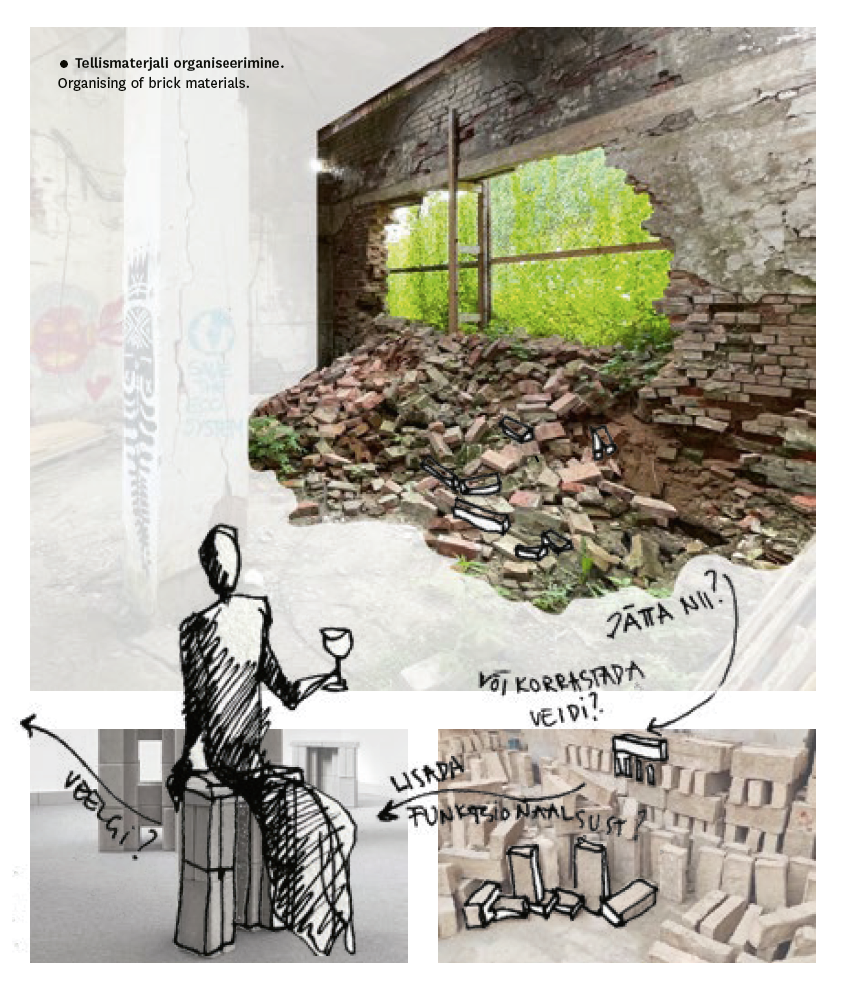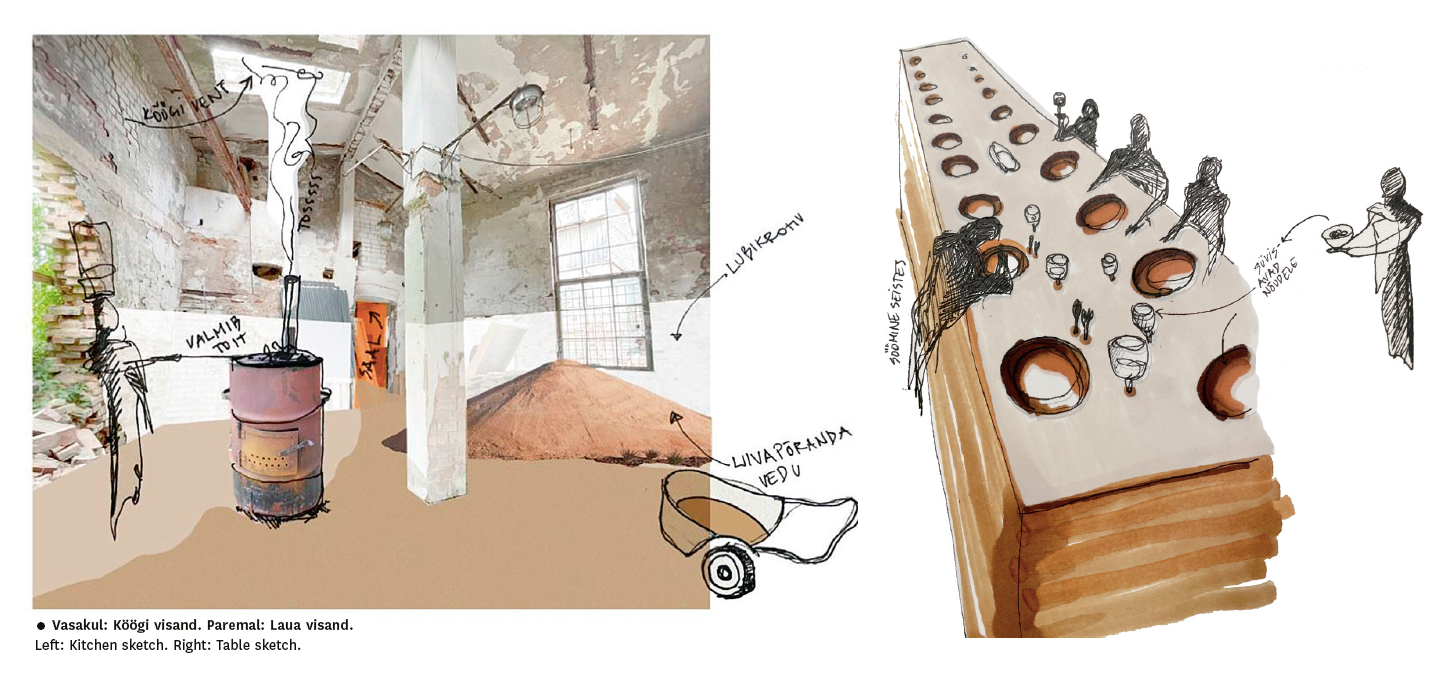RESTAURANT 0
Location: Kraavi Street, Viljandi
Series concept: Eero Reinu, Mikk Jürjens, Ott Tomik, Märt Metsallik
Design: Maria Helena Luiga, Andrea Tamm, Henri Papson and Hannes Praks (kuidas.works)
Additional help: Kaisa Sööt, Ann-Katriin Kelder, Kaarel Kuusk
Clay supplier and consultation: Saviukumaja
Project and completion: 2021
A TV show called Restaurant 0 recently aired on Estonian Television, which focused on an experiment conceived by the Põhjaka chefs Ott Tomik and Märt Metsallik to open a conceptual restaurant in Viljandi within a single week. A question was raised on how it is possible to live sustainably and peacefully in a time when ecological catastrophe is imminent. Is it possible to establish a restaurant on zero budget and with zero footprint? The chosen location was an idle, rather deserted-looking 18th-century building in Viljandi. Studio kuidas.works was summoned to devise a spatial solution for the project.
We decided on minimal intervention in interior design—we cleaned the spaces from rubbish and showcased the existing materials. We covered the floors with sand and whitewashed the walls. All that set the tone for highlighting the main purpose element of the restaurant—a 15-ton dinner table designed for feasting that was made of rammed earth and looked as much ascetic as it did solemn.
How?
A while ago, in collaboration with students from the interior design department of the Estonian Academy of Arts, we founded a platform called kuidas.works (transl. ‘how.works’). In practice, we found ourselves delving deep into the burning questions of interior design, searching for answers. We ask, how we need something and how low-tech solutions can help us. Is low-tech manufacturing convenient, inconvenient, or an inevitable concern that humanity is forced to deal with? To answer these questions, our studio is indefinitely focused on researching low-tech solutions.
On analysing the paradigm of Restaurant 0, we realised rather quickly that while recycling and upcycling waste does help to reduce the footprint caused by rapid consumption, once the design product reaches the end of its life cycle, it is still headed to the scrapyard or incineration. Thus, we arrived at the eternity of clay as a building material, which is entirely reusable and waste-free. The selection was supported by the geographical position of the restaurant—Lake Viljandi and the Raudna River can be tentatively considered the borderline between northern and southern Estonia, south of which lies the vaster distribution of Estonian clay architecture.

The dimension of research
The technology of rammed earth has a long history, yet, in today’s world there is limited supply of experience and expertise as to its application. As a rule, the method with which walls are built is based on adding clay, densifying it layer by layer, each of which is visually discernible in the built wall.
Throughout the process, we studied the aesthetic and constructive synergies of different types of clay, the relation between local and imported material, and the applications available to us depending on the varying roles of the builder and the designer. We were also concerned with the considerable amount of time it takes to install the material—and how the time spent relates to the final quality of the object. The modern, ultra-fast-paced world of architecture makes the former concern extremely relevant.
Beyond the clay table, only less than five percent of the used materials required any significant recycling energy. In our project, such scraps were mainly made up of miscellaneous accessories like wooden trays, plates made from the bottoms of 3-litre glass jars and steel plates, and copper tube sleeves turned into glass stands. The main mass of the object—clay and sand—can be easily reused as both earth refiller and natural building material. Even if left in ruins, neither the object nor the matter would burden the environment.

HANNES PRAKS is a designer of low-tech solutions, researching the applicability of clay-based building methods in contemporary spatial design.
PHOTOS by Tõnu Tunnel
PUBLISHED: Maja 107 (winter 2022) with main topic Evolution or Revolution?
SEE ALSO: Kalev Rajangu, „Zerotopia“
1 Madis Vasser, https://madisvasser.com/lihttehnoloogia/







